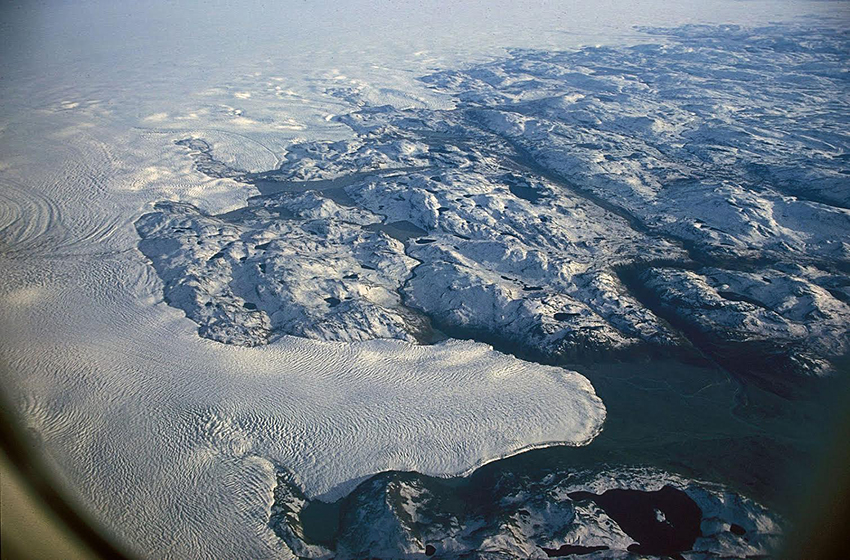Using glacial data and lots of geometry, UT researchers discovered what makes some glaciers more susceptible to melting.
Researchers at UT’s Institute for Geophysics, or UTIG, led the study, which evaluated the shape of Greenland ice sheets, and determined a method of identifying unstable glaciers. These observations, published on April 17 in Nature Geoscience, can help glaciologists better understand sea level rise.
“Our work here shows, in a very straightforward and accessible way, why some glaciers are thinning significantly, and others are not,” said Tim Bartholomaus, geology professor at the University of Idaho and former UTIG research associate. “(Currently) we run very complicated, painstaking computer simulations to predict how the ice sheets will change in the future. But through this (new) process we can better understand climate change, and reduce the uncertainty in predictions of future sea level rise.”
Bartholomaus said that thicker glaciers, specifically those around 500 to 1,000 meters thick, with relatively gentle surface slopes, are more susceptible to thinning than thinner and steep glaciers.
According to the study, glacial thinning starts at the terminus, or front of the glacier. If the thinning reaches the interior of the glacier, the whole sheet is more susceptible to ice mass loss. According to Denis Felikson, a UTIG graduate research assistant, glaciers are susceptible to thinning when the front part of the glacier is between 10 and 30 miles inland. He added that some glaciers begin thinning when this terminus extends inland even further, up to 150 miles.
“We’ve observed that when (a glacier) melts, the lowest part of the glacier, close to the terminus, starts thinning,” Felikson said. “That thinning is not … going to continue all the way into the center necessarily, because (the rate of melting is) controlled by the glacier’s geometry. If the ice isn’t thin and level, then the glacier is more susceptible to retreating.”
The Greenland Ice Sheet is one of the largest ice sheets on Earth, second only to the Antarctic Ice Sheet. Despite the variety of glacial shapes, scientists have observed climate-induced, high melting rates in both these ice sheets for decades, according to Felikson. According to the National Snow and Ice Data Center, if the Greenland Ice Sheet melted, sea levels would rise about 20 feet.
Bartholomaus said that this research helps eliminate the need for running widespread, lengthy computer tests to determine how glaciers will melt. He added that with this research, scientists can faster evaluate the problem of glacial thinning.
Ginny Catania, UT geoscience professor and principal investigator on Greenland icecap research, said the team studied glaciers in similar environments. She said that of the 16 glaciers observed, the team determined that four were more susceptible to thinning, due to their geometry.
Felikson said the team’s next step is to expand their observations to the entire Greenland Ice Sheet, and use their new method to determine which of these glaciers is more susceptible to thinning.
“It’s a very important topic because glaciers are changing so rapidly,” Felikson said. “This has a lot of implications. (The thinning of glaciers) at least allows us to learn a lot more about glaciers than if nothing was happening.”














